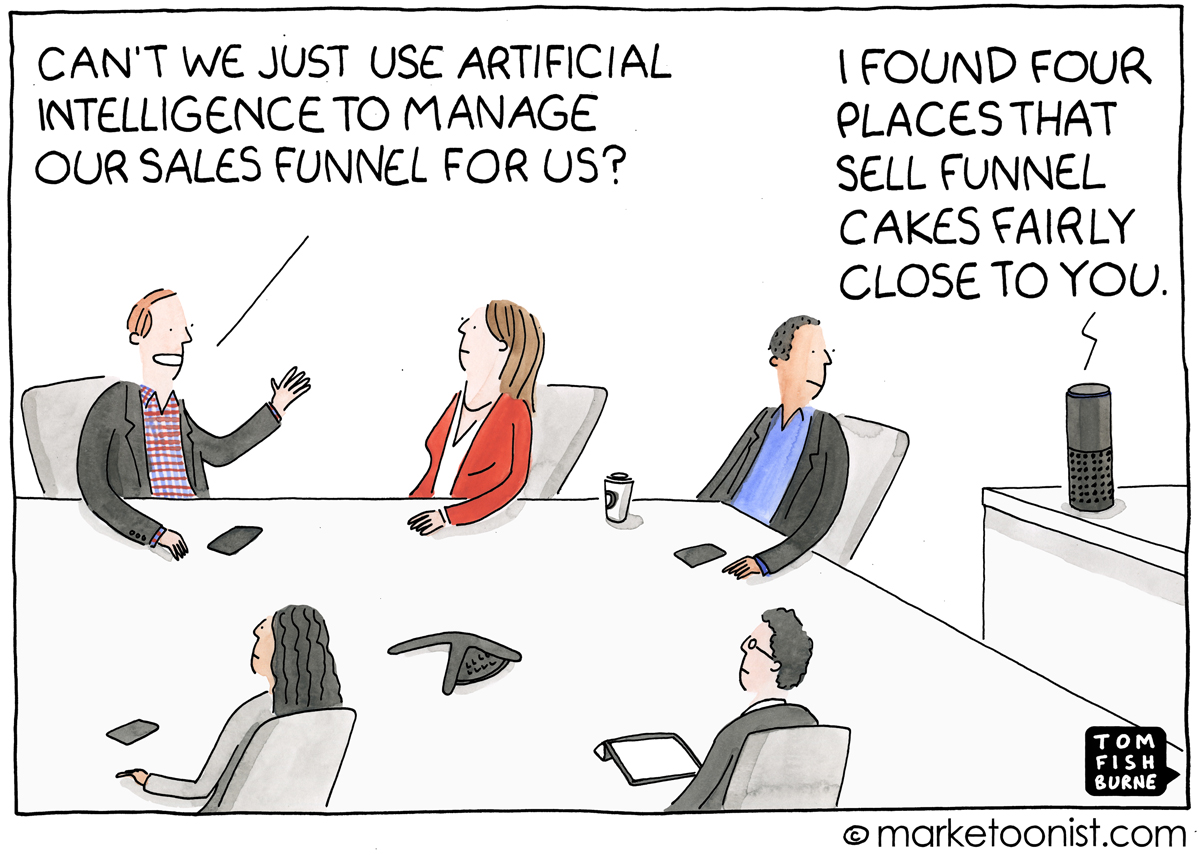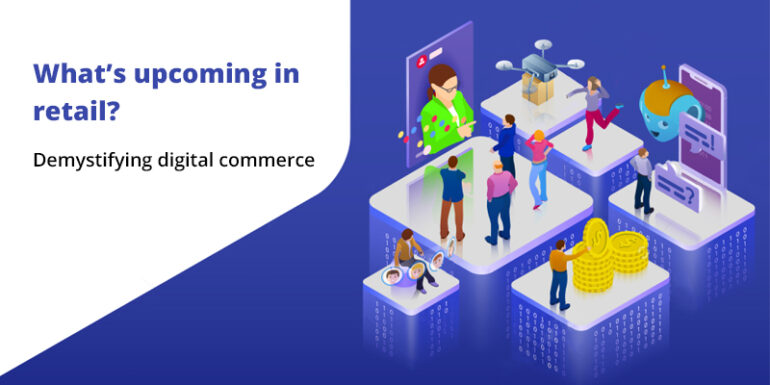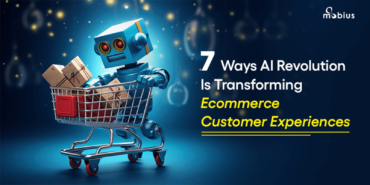This article was recently published on Datafloq. You can also read it here
For some of us listening to music, unwrapping a present, meditating, working out or just a hug contributes tad bit to loosening the levels of stress we go through.
While there is an entire another bunch that simply slurp up chocolates that are almost always available in their backpacks as a result of stocking them up being clearly aware of its need in rough times. It’s no joke! These pack of world’s most popular comfort foods can really calm you down.
Now, there are some of us who are almost always zestful when it comes to shopping!
Well, can you blame us?
Is there any other better therapy than shopping? With shopping apps available on mobile devices, adding your favorite things to the cart and sometimes even ordering them is an absolute therapy. Thanks to the digital wallet that has made shopping so instant like a relief to those who crave calmness having not to worry much about not having a resourceful wallet.
The shopping cult is not the same as it was a decade ago. To articulate, in 2017, a whopping 1.66 billion people worldwide purchased goods online. By stating this fact, I would like to point out that digital shopping will grow, expand, conquer and completely revolutionize shopping trends, forever. This does not mean brick and mortar would be dead, this means while it would still be there, there’s a wodge of opportunities stacked up for digital commerce.
So, retailers! Pull up your sock, get ready to be fully equipped with retail tech & trends, because your customers are no easy puzzle to crack. They’re savvy and are always looking for solace in shopping. This straight-up means easing out the process of online shopping and what’s better than the growth of technology in retail in helping you get there?
Let’s discuss some momentous trends to tap on in the retail realm.
1. Artificial intelligence
AI is just about everywhere. Right from the facial recognition to security checks at airports, the spread of AI and its impact in every industry is stumbling. As a matter of fact, 85% of customer reactions will be managed without a human as soon as 2020.

AI is just about catching up well in the e-Commerce space. Capitalizing on this technology would help in enhancing customer experience and scale up business opportunities.
CB Insights had released a report that sums up about how big retailers like Walmart and Amazon believe AI is the buzz and a big trend to capitalize upon. The report also highlights that AI commerce equity funding has risen since 2013, piling up to $1.26 billion in deals through 2017.
As someone who sells online, I’m sure you’re always striving to regulate the supply chain process and give out the best experiences to a craving customer.
This is where AI comes in.
AI helps an online seller understand the customer habits in an online store, understand and send out recommendations through predictions aligned through targeting. Handling inventories and meeting customer expectations is where bigwigs like Amazon and Walmart have achieved through AI.
“Walmart’s patents focus on guiding shoppers through stores, speeding up the checkout process, and keeping the shelves stocked” – All with the support of AI
Another technology powered by AI is the chatbots – it’s significance in customer experience and their satisfaction cannot be stressed enough. Having chatbots on the online store will help a customer find answers any time of the day. This straight-up means offering a good experience to customers that are valued the most by e-Commerce industries.
2. Virtual assistance
Virtual assistance in a broad sense covers voice search, virtual fitting, and AR which will definitely redefine retail.
To begin with voice search, it is the most compelling technology that brings better customer engagement to the sellers and a seamless shopping experience. It is a win-win situation for both retailers and customers. They make life easy for a shopper as all one needs to do is do a voice search and complete the order by simply saying “order” whatever they want. Not just that, these devices, through intelligence, can remind when you’re running out of a product that you purchase often through data about the date of order.
Amazon and Google have sold 27 million voice devices in the U.S.( Consumer Intelligence Research Partners Reports).
Shopping indeed becomes more fun with a voice assistant asking you “ Did you like the Aveeno moisturizer delivered to you today, do drop a review”.
Let’s say the one drawback of online shopping is missing out on the experience at the store, the touch, feel, and trial of the product. Well, online shopping is not far behind the brick and mortar stores, technology is making tangibility possible with AR and virtual fitting.
Virtual fitting gives the customers the confidence to see how a dress would look on them without having to be anxious about how it would look on them after ordering it.
Take a look at this video by Zugara – virtual dressing room technology optimized for multiple retail channels.
3. Drone delivery
Drone deliveries are observed as a business opportunity by all industries- retail, restaurant chains, and tech companies. The primary benefit of making a transition from a traditionally packaged deliveries to drone would be to save cost and time.
For instance, Domino’s has begun its drone delivery, the “domicopter” that flew for around five minutes and dropped pizza boxes on the garden. This has halved the time taken by a driver to deliver. Domino’s is planning to expand drone-powered delivery in 6 countries by this year.
Take a look at Domino’s first drone delivery
Drone delivery is also catching up big time in Amazon. If you see, this technology is most lucrative for an online retailer like Amazon considering the percentage of lightweight goods they deliver and the cost they incur on commercial mails. Amazon prime air, once fully developed can carry up to five-pound packages in less than half an hour at a cost of $0.88.
Take a look at Amazon’s first prime air delivery here.
What Jeff Bezos thinks about implementing drones – full-fledged?
86% of items ordered on Amazon weigh five pounds or lesser. A small flat-rate box costs $6.45 to deliver commercial mails and takes a day to reach customers.
So, if delivery can be made faster and cheaper, it only means it would fetch more orders. Delivery drones cannot reshape logistics networks altogether, but we never know what might be possible. If technology advances further, drones can definitely work their way up in reinventing delivery systems.
Let’s wait and watch how this technology is going to shape-up!
4. Robotics
Initially led by Amazon, now a number of retailers and brands are getting over the manual warehouse management and making a transition to the trend of robots in retail. Order fulfillment and customer satisfaction is the key when it comes to critical elements for businesses selling online.
“ Amazon is also on the forefront of automation, finding new ways of getting robots to do the work once handled by employees”

In an attempt to reduce delivery time, enhance customer satisfaction, simplify the ordering process, ease out warehouse management, reduce the time and increase efficiency – warehouse robots have been the norm.
“With labor costs rising, robot costs coming down, and so many go-for applications, these types of robots are no-brainers for businesses everywhere and for a long time to come”
– Frank Tobe, co-founder of ROBO Global
Clearly, with labour cost rising and Robot costs coming down, this would be a brilliant technology to incorporate in the order fulfillment processes to reduce time and effort and to instantly delight your customers, because, there’s nothing that makes a customer happy than the excitement of unboxing the product that has reached sooner than expected.
5. Blockchain
Applications of blockchain in the retail supply chain is gaining greater prominence. Blockchain is a paradigm-shifting technology that is essentially a ledger technology that enables companies to record and not lose track of complex and highly voluminous digital transactions. This technology without a doubt is a need for digital commerce for one simple reason that the forecast in its growth and the eventual magnitude of consumers and digital transactions is said to erupt dramatically.

While Walmart was one of the first to implement blockchain, the future of blockchain in retail and its need for every online seller is going to be crucial because of the volume and complexity involved around the transactions.
Apart from maintaining these voluminous transactions at ease, blockchain and cryptocurrencies would be primarily helping the safety of transactions in online payments. Let’s say consumers are given the luxury of low transaction fees, safeguard their personal information without having the service of online transactions through middlemen that offer debit/credit card payments. This way your profits will also not be curbed as there are no middlemen to take a share of it.
The authenticity of transactions and making maintenance and tracking of numerous transactions sourced from retailers, suppliers, and customers easier is exactly why blockchain in e-commerce would be an absolute yes-yes.
Wrapping up
The digital commerce arena is young and its growth is exploding. The interconnectivity, customer relationships, inventory, and delivery management it has currently achieved is phenomenal. We’re all quite aware of the scope for growth and expansion in this industry. With such huge potential, it would only make sense for online sellers to exploit the inventions and aspiring technologies constantly aimed at reinventing and breaking-down complexities. While some of what we just discussed are yet to take more prominence, their potential is undoubtedly promising. Afterall, as Andrew Grove rightly said, “in technology, whatever can be done will be done”.
That being said, we hope you found this post useful and feel free to tell us about any other buzzing technology that you feel is likely to lit up retail in the comments section below!
Nandhini
Blogger and Community Manager







